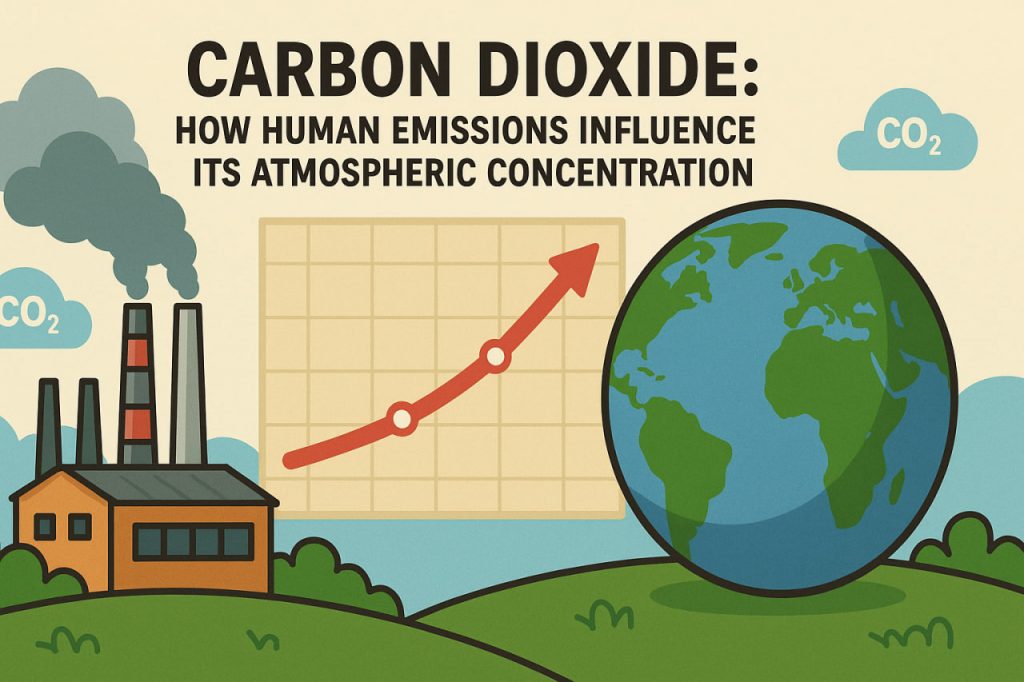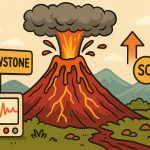Carbon dioxide (CO₂) is a naturally occurring greenhouse gas in Earth’s atmosphere. It plays a crucial role in regulating global temperature by trapping heat from the Sun. In balanced amounts, CO₂ helps sustain life by supporting photosynthesis in plants. However, excessive concentrations disrupt this balance. Natural processes like volcanic eruptions, respiration, and ocean release naturaly increasing CO₂ levels.
Historical CO₂ Levels
For hundreds of thousands of years, CO₂ concentration fluctuated between 180 and 1000+ parts per million (ppm), as shown by ice core records. These fluctuations were linked to natural climate cycles. However, since the Industrial Revolution in the 18th century, atmospheric CO₂ has risen dramatically. Today, levels exceed 420 ppm—higher than at any point in at least 150 years. This sharp rise correlates directly with the large-scale burning of fossil fuels such as coal, oil, and natural gas.
Human Emissions and Their Scale
The main human sources of CO₂ are fossil fuel combustion, deforestation, and certain industrial processes like cement production. Each year, human activities release more than 35 billion metric tons of CO₂ into the atmosphere. This rate of emission overwhelms natural carbon sinks such as forests and oceans, which absorb only about half of what humans emit. As a result, CO₂ accumulates, pushing atmospheric concentrations higher year after year.
Effects on Climate and Environment
Rising CO₂ concentrations intensify the greenhouse effect, trapping more heat and raising global average temperatures. This leads to melting glaciers, sea level rise, and shifts in weather patterns. Higher CO₂ levels also contribute to ocean acidification, as the gas dissolves into seawater, harming marine ecosystems like coral reefs. On land, ecosystems are stressed by rapid climate changes, with some species struggling to adapt. The effects of CO₂ emissions are global, crossing national borders and affecting all living organisms.
The Future of Atmospheric CO₂
If emissions continue at the current rate, CO₂ concentrations could reach 600 ppm or more by the end of the century. Reducing emissions through renewable energy, reforestation, and improved efficiency can slow this trend. While CO₂ will remain in the atmosphere for centuries, immediate action can reduce the long-term consequences. The future of Earth’s climate depends strongly on the choices humanity makes today and not only in greenhouse gases emission.
Conclusion
Human emissions of carbon dioxide have pushed atmospheric concentrations to levels unseen in hundreds of years. By burning fossil fuels and altering land use, we have transformed a natural climate regulator into a driver of global change. The evidence is clear: rising CO₂ is not just a natural cycle but a direct result of human activity as well.
Glossary
- Carbon dioxide (CO₂) – a greenhouse gas produced naturally and by human activities.
- Greenhouse gas – a gas that traps heat in Earth’s atmosphere.
- Fossil fuels – energy sources such as coal, oil, and natural gas formed from ancient organisms.
- Deforestation – large-scale removal of forests, reducing natural CO₂ absorption.
- Carbon sinks – natural systems like forests and oceans that absorb carbon dioxide.
- Keeling Curve – a graph showing the rise of atmospheric CO₂ since the 1950s.
- Ocean acidification – the process of oceans becoming more acidic due to CO₂ absorption.


